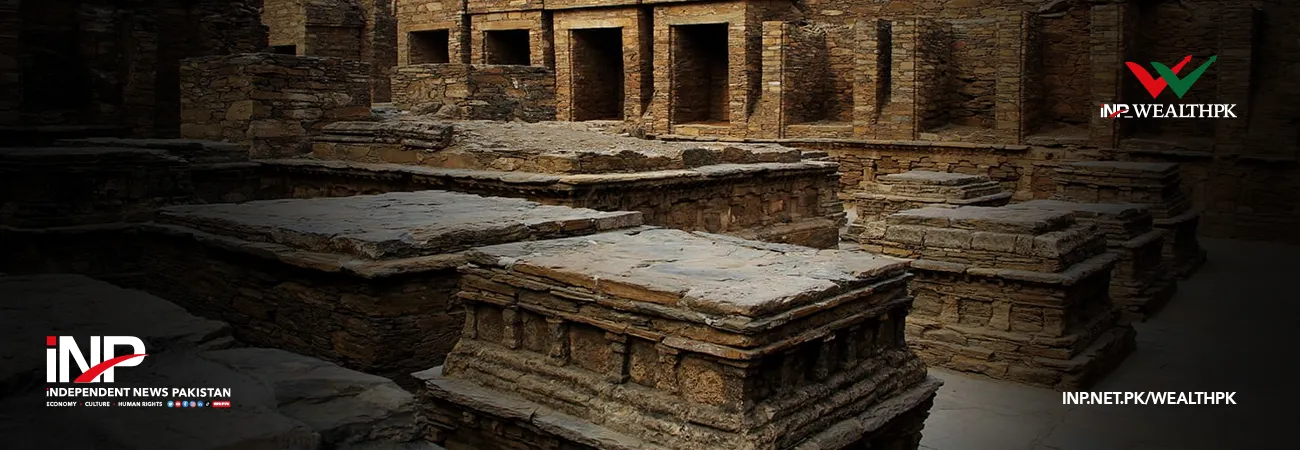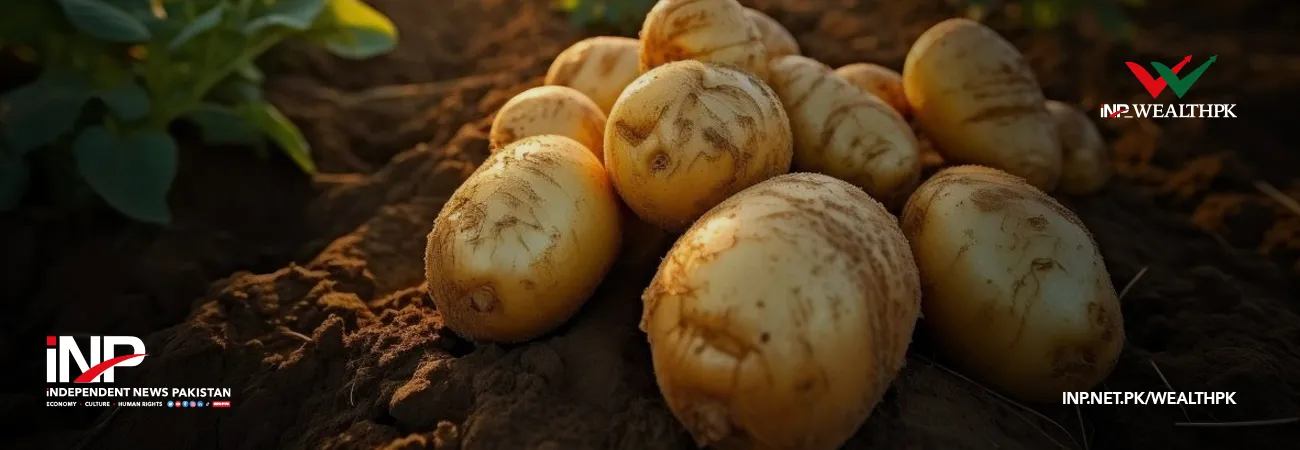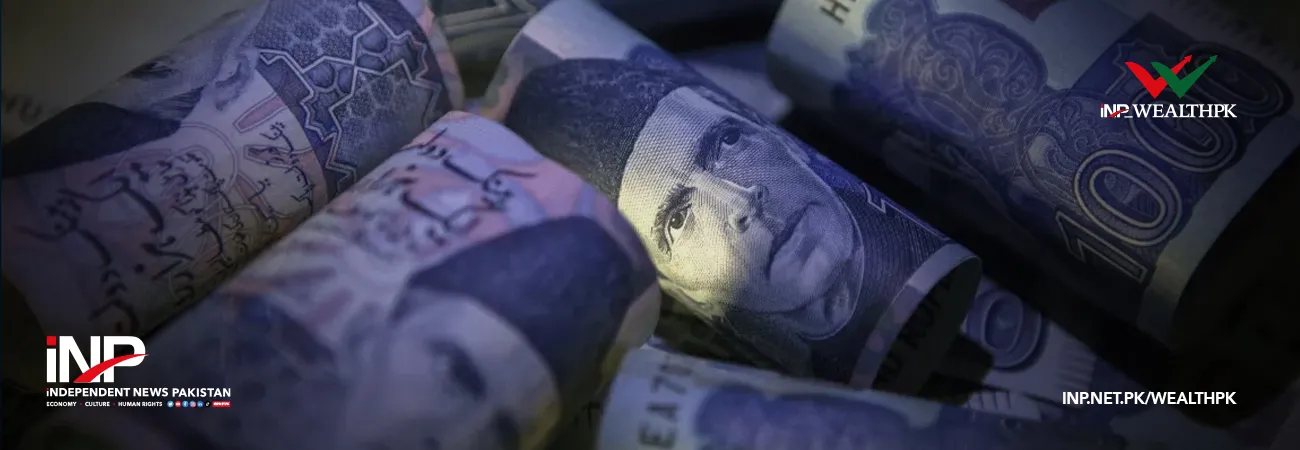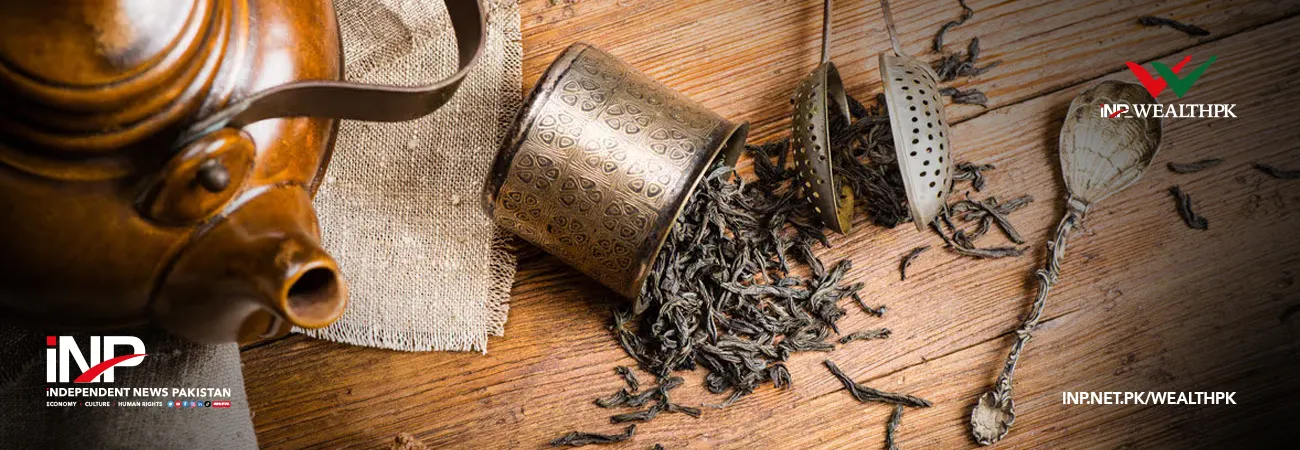INP-WealthPk
Faiza Tehseen
Nestled atop hills around 1600ft above the sea level in Mardan district of northwestern Khyber Pakhtunkhwa province is the Buddhist monastic complex of Takh-i-Bahi that has withstood the ravages of the time since the early first century. Owing to its location high in the hillocks, these ancient remains also remained safe from the loot and plunder of invaders and marauders during different periods of the history. The high walls of this complex scrawled with graffiti and inscriptions speak volumes for a civilization that once thrived and prospered to the envy of the nations of the time. Though this ancient archaeological site draws visitors from across the world, the footfall of tourists and Buddhist pilgrims can be increased through its proper conservation and beautification, which will bring sizable foreign exchange to the state coffers. Talking to WealthPK, Director Directorate of Archaeology and Museums in Khyber Pakhtunkhwa (KP) Dr. Abdul Samad said, “Takht-i-Bhai is one of six sites in Pakistan declared world heritage by the UNESCO. This status was awarded to Takht-i-Bahi in 1982.
It is a 2000-year-old Buddhist site that continuously remained the principal Buddhist temple for at least eight centuries. Even today, it is considered a sacred place among Buddhists across the globe, and is a gateway to religious tourism. Unfortunately, both federal and provincial tourist departments are ignoring heritage tourism.” Following the 18th Amendment, the KP government took official control of this site and developed it more through new excavations and conservation,. Accommodation lands were also purchased to prevent any future encroachment issues. “All national tourism departments and tour operators should prepare good tourist packages concerning the archaeological sites to attract tourists. It will play a good role in boosting the country’s economy and improving the livelihood of the local people,” Dr. Abdul Samad said.
“Although at all historic places, guides from the archaeology department are available, the department is still keen to train officials from the tourism sector. If the Chinese collaborate with us in developing this site, it will be a good omen,” added Dr. Samad. Discussing with WealthPK the importance of Takht-i-Bahi, Deputy Director of Archaeology and Museums, Islamabad Dr. Mahmood-ul-Hassan said that it was one of the most preserved early Buddhist sites in the region. The word Takht-i-Bahi is interpreted in many ways. For example, ‘Takht’ and ‘Bahi’ are derived from the Persian language meaning throne and the water spring respectively – the strongest myth to name it. In the 2nd century AD during the Buddhist Kushan dynasty which remained up to the 5th Century AD, Takht-I-Bahi was the pivot of knowledge.
It is located in a valley at the top of hillocks covering an area of at least two kilometers in radius. It is a grand Buddhist complex consisting of a main stupa and other attachments, i.e. a multitude of stupas, chapels (small rooms where Buddhist sculptures were erected to worship or to keep some offering in front of them), monasteries (cubical monk rooms for a single living sometimes built double storied), and meditation cells (usually hollow places made through rock pecking). Continuing the discussion, Dr. Mahmood said that preservation and conservation of historical heritage sites was a technical and sophisticated job. “As the historical proof, they must be kept clean and in a presentable condition. Nothing new can be added except conservation.
The law in Pakistan allows no modern development, including plantation, within 200 feet of any monument. So, the public facilities are arranged a little bit away from the site,” he explained. “To make this site more attractive, a Chinese example can be good to follow. I recently visited China and saw seven of their archaeological sites. Along with quality tourist facilities, they also have created charming adornments. For example, a Buddhist site has been adorned with bells. colorful Chinese lanterns and buntings have been used at many places to attract visitors. It means that proper planning and investment both are important to bring all these aspects here in Pakistan,” Dr. Mahmood added. Sharing his views with WealthPK about Takht-i-Bahi, General Manager of Tourism Authority KP Umair Khattak said if the potential of this spot was exploited in a uniform way, it could be the best revenue generation spot for Mardan city.
He said coordination between both the tourism and archaeology departments was direly needed to conserve and promote such places. Talking about the importance of Takht-i-Bahi and Chinese coordination in new conservation practices, Assistant Curator in the Sub Regional Office (Mardan) of the Directorate of Archaeology and Museums Mian Wahab Shah told WealthPK that the KP Archaeology Department and Chinese Heritage Foundation recently launched performed a project for conservation of two rooms and a front veranda at Viewpoint Number 3. He said the Chinese ways of conservation were smart. If Pakistan gets Chinese coordination for conservation, curation, and beautification of historical sites, it will add more value to the country’s archaeo-tourist spots, he added. Talking to WealthPK, Managing Director of Pakistan Tourism Development Corporation (PTDC) Aftab ur Rahman Rana said Pakistan was the only country in the world where the remains of two ancient but different civilizations were found, i.e. the Indus Valley civilization and Gandhara civilization.
“The area of Gandhara civilization covers the south from Peshawar to Mardan, Swat, Dir, Swabi, and Chakdarra, and then on the other side of the Indus is the area of Taxila. From the 3rd century B.C. to about 10th B.C. Buddhism flourished and Takht-i-Bahi was the heart of Buddhist preaching and learning practices,” he said. “If we preserve the whole Buddhist heritage in a nice way and develop it from the tourism point of view, then obviously, it will prove a great source of revenue generation. The main reason is that there are over 500 million followers of Buddhism in the world,” he said. “The Buddhist heritage is a wonderful asset to Pakistan and it must be properly developed. Pakistan can earn billions of dollars from Buddhist tourism, but there is a dire need for its proper conservation and development,” said the PTDC Managing Director.
He further said the PTDC had started new practices for promotion of Gandhara heritage like introducing a new publicity literature, a detailed guidebook concerning Taxila, and a leaflet named ‘Gandhara trail’ (also available in Chinese and Korean languages and will be published in many other languages), launching a new website related to Gandhara, motivating tour operators to develop different packages for Gandhara sites and a special training program for Gandhara tour guides, arranging meetings with the tour operators of Buddhist countries, and tour operators exchange program. Hopefully, due to all these efforts, Gandhara heritage and Buddhist tourism will flourish in Pakistan, added Aftab.
Credit: INP-WealthPk













